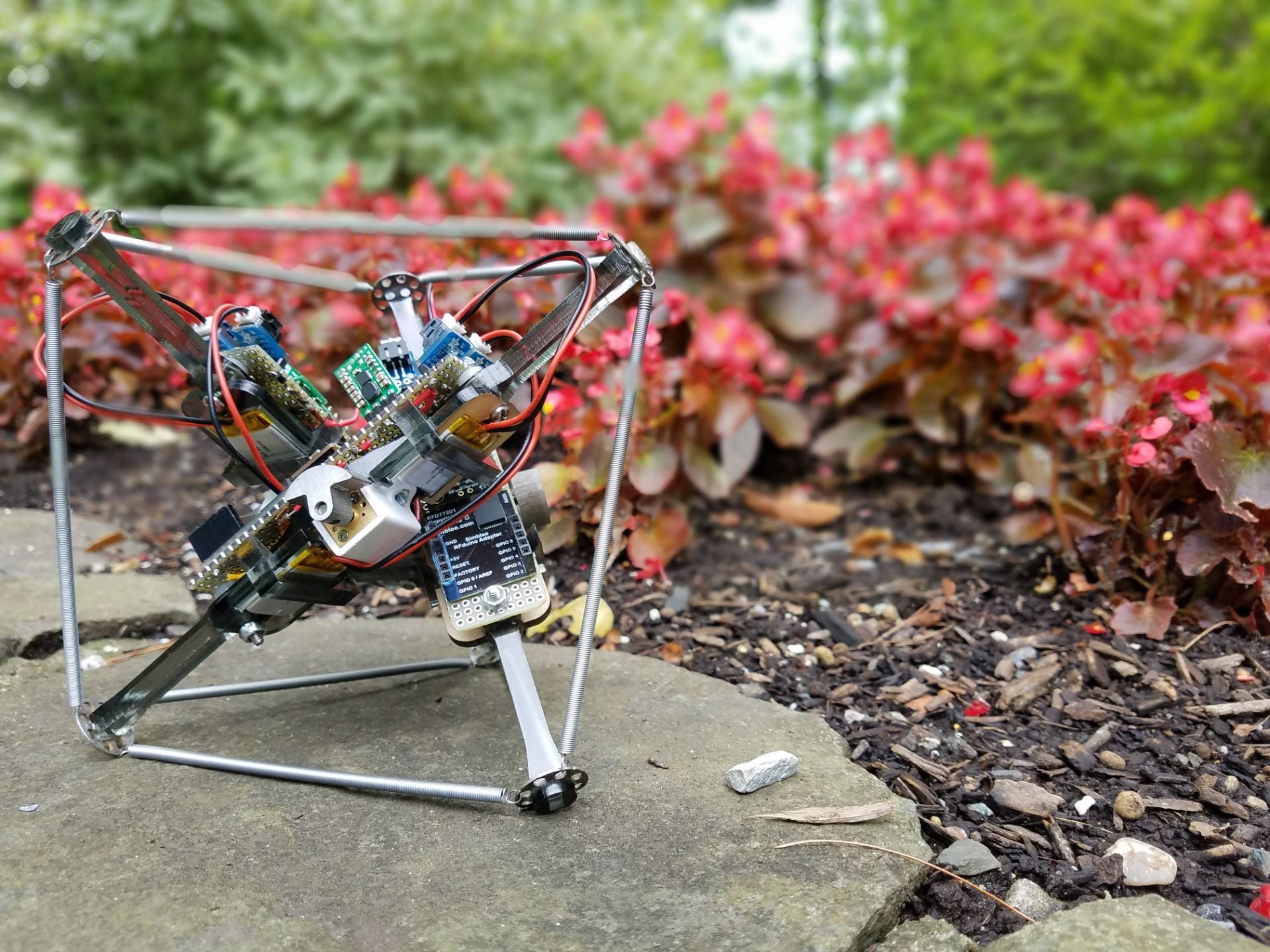
Edinburg, Scotland, April 4, 2022
(Virtual)
Organizers:
- John Rieffel (Union College) – Chair
- Dario Floreano (EPFL)
- Rebecca Kramer-Bottiglio (Yale)
- Valter Böhm (OTH Regensburg)
- Vishesh Vikas (University of Alabama)
Following on the successes of our 2018 and 2019 workshops, the purpose of this workshop is to provide a forum to discuss recent advances and challenges in the field of tensegrity robotics. As compliant structures with tunable stiffness, tensegrities are a compelling platform with which to study the spectrum of robotic morphologies, from soft to rigid. Tensegrities are relatively simple to design and fabricate, and yet they present all the same challenges and pathologies of more conventional robots. Most valuably, they are incredibly modular, requiring few distinct parts, and allowing them to scale quite well in complexity. This workshop will provide participants with an opportunity to present and discuss the current state-of-the-art in tensegrity robotic research, through a series of invited talks, a solicited poster session, and an interactive panel discussion.
Tensegrities are relatively simple mechanical systems, consisting of a number of rigid elements (struts) joined at their endpoints by tensile elements (cables or springs), and kept stable through a synergistic interplay of pre-stress forces. Beyond engineering, properties of tensegrity have been demonstrated at all scales of the natural world, ranging from the tendinous network of the human hand to the mechanotransduction of living cell. At every scale, tensegrity structures have an impressive strength-to-weight ratio, are structurally robust, and stable in the face of deformation. Moreover, tensegrity structures are inherently modular (consisting of only struts and springs). This means that increasingly complex tensegrity structures can be constructed simply by increasing the number of struts and springs. They are simple enough to be baby toys and complex enough to serve as the basis for the next generation of NASA’s planetary rovers. Tensegrity structures are therefore a compelling and versatile platform with which to explore a wide range of topics and applications relevant to the broader IEEE-ROS and ICRA communities, including biomimetics, bio-inspired Robots soft material robotics, cellular and modular robots, compliant joint/mechanism, distributed robot systems, and tendon/wire mechanism (to name just a few). The goal of this workshop is therefore to provide a showcase for tensegrity researchers to present advances in the state-of-the-art and to discuss ongoing challenges within the field, while simultaneously attracting and engaging new participants in the field
Specific topics include (but are not limited to):
• Tensegrity-based soft robots
• Bioinspired tensegrity robots
• Tensegrity Modular Robots
• Multi-scale tensegrity robots
• Biological modeling with tensegrity systems
• Tensegrity models and simulators
• Sensing, control, and actuation of tensegrity robots
• Theory of tensegrity systems
• Applications of tensegrity robots
• Tensegrity structures in biological system
Schedule (all times GMT+1)
- 14:00: Opening Remarks (5 minutes)
- 14:00-16:00 Invited Talks: (15 minutes + 5 minutes questions)
- Tensegrity Robots Driven by Thin Pneumatic Artificial Muscles, Ryota Kobayashi (Tokyo Tech)
- Wheeled Tensegrity Modular Robots for Practical Applications, Tianyuan Wang (University of York)
- A System Design Approach for Control of Tensegrity Robots, Raman Goyal (PARC)
- Behavioral Repertoires for Tensegrity Robots, John Rieffel (Union College)
- Collision Resilient Bio-inspired Tensegrity Drone, Omar Aloui (EPFL)
- 16:00 – 17:00pm Poster Spotlight Talks/Poster Session: ( 3-minutes each)
- Compliant grippers based on multistable tensegrity structures, Glaser, J.; Langenscheidt, R.; Boehm, V. (OTH Regensburg)
- Multimodal mobile robot based on a multistable tensegrity structure, Schorr, P.; Boehm, V. (OTH Regensburg)
- A soft, stiffness-controllable joint using antagonistic actuation principles, Wenlong Gaozhang (UCL)
- 17:00 Panel Discussion:An open-ended interactive panel discussion of the upcoming ”grand challenges” of tensegrity robotics research.
POSTER GUIDELINES:
- Please respect A0 poster size in portrait orientation (841x1189mm) for your poster.
Paper Details:
All participants will be invited to a future Journal Special Issue on tensegrity robotics.
Submissions can be sent to the workshop chair, rieffelj@union.edu.
Direct all correspondence to John Rieffel (rieffelj@union.edu)